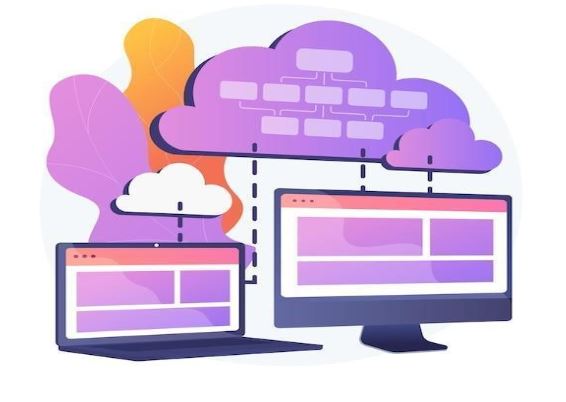Before the business moves its core activities to the cloud, the team must figure out how to do it safely without disrupting anything. This can be a significant challenge since the process can sometimes be disruptive.
While planning the migration, begin by relying on tools to help you complete all the activities that would make the entire process smoother.
A successful migration is mainly dependent on the tools you are deploying. You can rely on the Windows server migration tools designed and optimized for this process. However, not all migration tools are ideal for your needs.
You must select the perfect one based on your migration needs and compatibility issues. Before you outsource or begin the migration, here are some guides to using these tools.
1. Getting All The Necessary Tools
A successful migration will depend on the software you deploy and the experts you hire to help you with the process. As you prepare for any errors that may arise, ensure you have the right tools to fix them and resume a smooth transition. Some of these errors are likely very expensive and time-consuming to fix.
You should have all the relevant migration tools, and you can either outsource or buy them depending on your needs. The tools should vary; however, servers integrate all the essential ones. You can only outsource what is missing or those needed for other unique organizational needs.
Besides worrying about the tools, create a collaborative framework working with third parties with the tools to make the transition fast and error-free. Otherwise, the Windows server tools are sufficient. Through their services, you can easily choose the most compatible Windows server migration tools and create a plan to ensure everything goes smoothly.
The nature of the tools selected can also depend on the organizational needs. The volume and nature of the organizational data considerably influence the type of tools to facilitate migration. While preparing the tools, evaluate each for suitability in supporting various migration activities.
2. Preparing for Migration
After you have all the right tools, your next focus should be getting ready for the services to begin the transition. First, you have to plan for the destination and source servers. You must build and prepare the source and destination servers for migration.
These two should operate on the same version of Windows servers to ensure compatibility. This will facilitate speedy data migration and minimize compatibility issues since they utilize the same data quality and format.
Therefore, the data on the source is likely the same as the one on the destination. If the servers vary based on the model, ensure they are compatible and can allow data transfer without any issues. You can install other tools to eliminate errors and enable flawless migration. Ideally, the transfer will be similar without the user feeling much difference.
3. Installing Other Migration Tools
The window servers alone are inadequate to initiate the migration, hence the need for various support tools. Once you install the servers, test for compatibility, and evaluate any critical items that may be missing, the following process is to install the migration tools.
Instead of installing and looking for the tools individually, you can get them from a pack of migration tools. Install the Windows Server Manager or Powershell to get the necessary tools.
These two contain all the elements you need, including the tool that will convert the data and format it to the same format to facilitate the migration. They can also notify you of any issues during the migration, ensuring you take the necessary precautions to avoid mistakes.
Ensure the tools you install must come from genuine Windows and Microsoft sources. Otherwise, you risk experiencing issues like bugs that may slow the migration. You can install them from the command prompt or reliable sources.
4. Create A Deployment Folder
When migrating your data to the cloud, you should avoid engaging with the main business folders due to the potential risks. Relying on the main folder could lead to data corruption and other downtime issues affecting organization operations.
Instead, migrate all the data from a separate folder called the deployment folder. This folder should contain all the data in the proper structure and architecture for the migration. Ensure it is a replica of the current organizational data structure.
You will move the content from this folder to the destination folders. You should create a similar folder at the destination, though it is empty. The strategy is also ideal to avoid disrupting other businesses’ operations, which may be ongoing in different folders.
5. Streamlining The Configurations
The migration process should be algorithm-based and system-driven, and it needs to occur with minimal input from you. To do so, you should codify on the command prompt to trigger the system to resume and manage data migration.
This configuration should define the data sources, the deployment folder, and the destination. If you haven’t already, this prompt can help you create the deployment folder.
Next, copy the deployment folder to the destination server, triggering the migration. Once you copy the folder to the destination server, you should run a command prompt similar to the one you ran on the source server. The command will install the migration tools on the destination server, ensuring it is ready for the onset of migration.
6. Migrqate The Data
Once everything is streamlined and all the tests are passed, you can begin data migrations. To copy the data from the deployment folder to the destination servers, trigger different settings, features, and tools.
Sometimes, you can keep adding data to the deployment folder while the migration is ongoing. The system will ensure all the data migrates to the cloud, including the latest ones. You should retain the folder for future operations and ease of automatic data uploads.
Conclusion
Data migration to the cloud should be more straightforward if you have all the right tools and expertise to help. Follow all the procedural guidelines to avoid mistakes or skip the crucial migration steps.
Once you complete the migration, verify everything to ensure efficiency and streamline all the operations.
Also Read: https://usatimenetwork.com/




